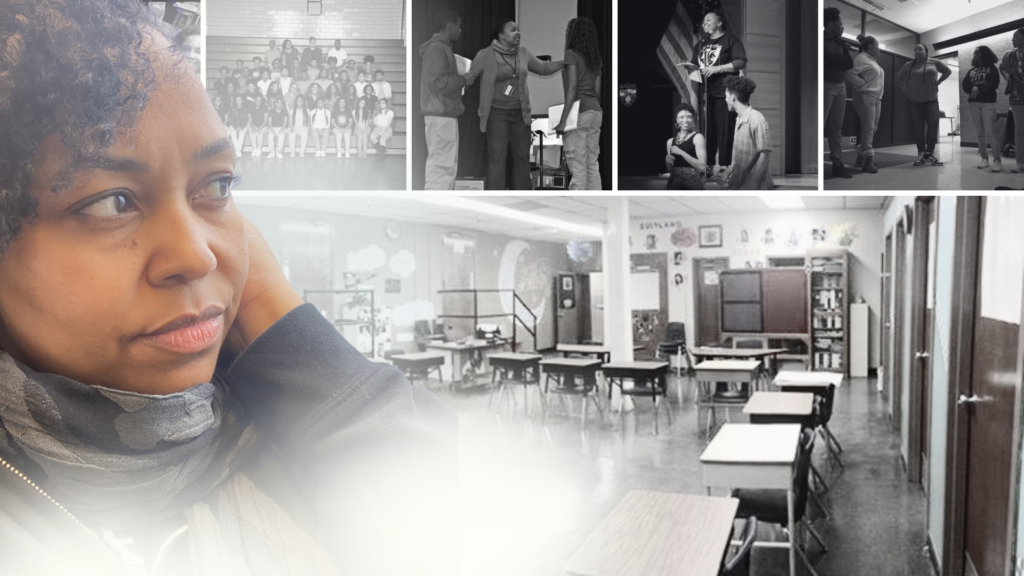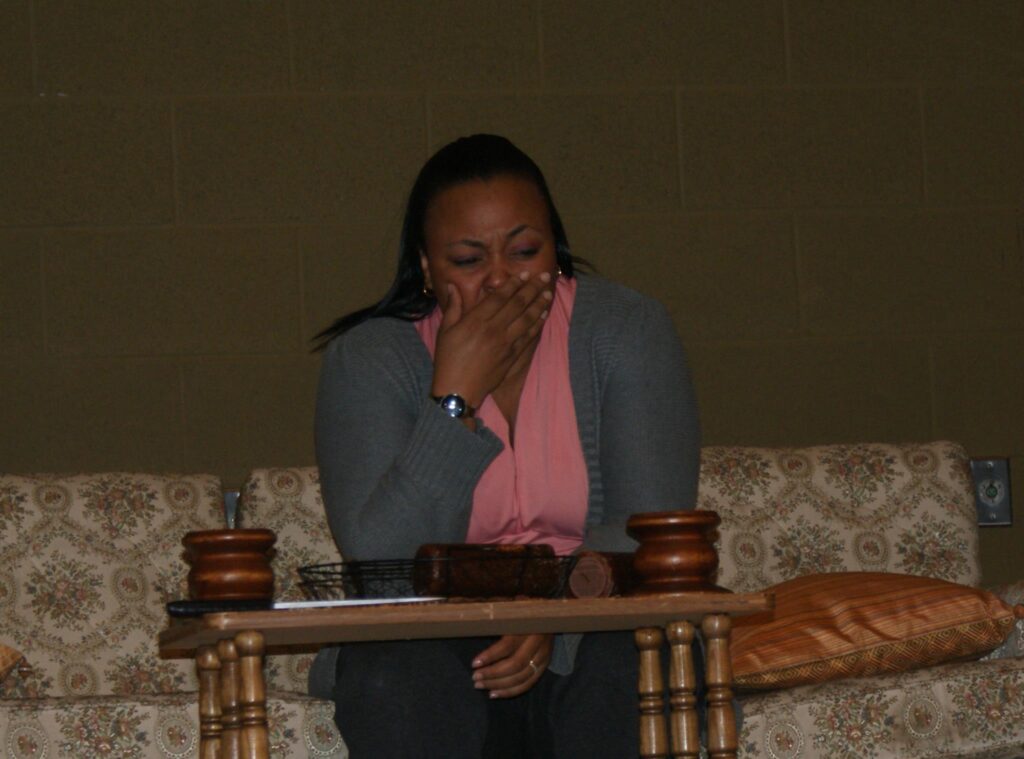
I remember very vividly the day I “broke”.
I was sitting in my car outside of my classroom door. All week, I had spent my lunches talking with a student about her self-harm. She had already been referred to the school counselor. Her parents knew. But she felt comfortable talking to me about it…and I was determined to be an ear for her.
She was not the first of my students who self-harmed. Before then, I had a student who attempted to un-alive themself in the school bathroom…and then came to my classroom door, bleeding. They had a change of heart and came to me because they trusted me. And just like that day– when I stopped teaching my class of 11th graders and rushed to their side to help– all I could think about that week with the student who self-harmed was, “I can help. I can fix this.”
Emotionally and mentally exhausted, I left school that day, got in my car—and got the call.
I had just lost another student.
The third in my young career.
This time to cancer.
I remember screaming. Crying. Feeling lost.
Feeling like I had lost..and that I had failed.

Loss or Lost?
This was not the burnout I had experienced off and on for years. This was something else.
I was grieving…but it was also something more.
This feeling had been welling up in me for years. With every trauma my students faced, I found myself feeling the effects.
Sleeplessness. Anxiety. Dread.
It took a while after the day that I “broke” before I realized that I had been dealing with secondary traumatic stress on top of my burnout.
Both secondary traumatic stress and compassion fatigue have been repeatedly identified in the healthcare and mental health fields but have only recently been explored in the context of teaching.
Glenys Oberg, Frontiers in Education
The Trifecta of Teacher Mental Trauma
Teaching in today’s society comes with many obstacles. With a worldwide pandemic that shut down our entire way of life for months on end, the toxic political landscape that serves as a battleground in the fight for education, ad a sharp increase in violence in schools, students and educators are experiencing trauma in ways we never have before.
Exposure to trauma can have a significant impact on individuals, especially for those who work in challenging environments such as healthcare, social work, or teaching. Two conditions that often arise from exposure to trauma are secondary traumatic stress and compassion fatigue. It’s important for teachers to understand the differences and similarities between these two conditions.
What are Secondary Traumatic Stress and Compassion Fatigue?
Secondary traumatic stress occurs when an individual experiences stress due to a strong empathetic response to a traumatic event experienced by someone else. Teachers may experience this when they hear about a student’s traumatic experience, and they can imagine the emotions that the student is going through. This can lead to symptoms such as anxiety, insomnia, and irritability, and it can affect the teacher’s ability to provide support to the student.
Compassion fatigue, on the other hand, is a type of emotional exhaustion that can occur when individuals have been exposed to multiple traumatic events or have been providing support to students experiencing trauma for an extended period. Compassion fatigue is common among teachers, who are often on the front lines of supporting students and their families. It is characterized by a reduced ability to empathize with and show interest in individuals who have experienced trauma. This condition is often seen in people working in psychologically challenging environments, leading to emotional exhaustion, depersonalization, and decreased sense of personal accomplishment.
Both secondary traumatic stress and compassion fatigue are related to exposure to trauma, but they differ in their emotional and empathetic responses. It’s essential for teachers to recognize the signs of both conditions and take steps to manage their own mental health, such as seeking support from colleagues, engaging in self-care practices, and accessing mental health resources if necessary.
Finding My Healing
Art has always been my go-to when my life feels like it’s spinning out of control. When I found myself deep in the throws of secondary traumatic stress, my first love, THEATRE, saved me yet again.
I began to write about my teaching journey. The joyous, affirming moments and the dark, trying times. I crafted a solo show from those writings and began to share my story with other educators.
Through digging deeper into my journey as a teacher, I found healing.
I found empowerment in sharing that story at conferences and in many school districts across the country.
You can find healing and empowerment in your story too.
*************************************************
I created an educational consulting business that focuses on the emotional wellness of students and educators after recovering from secondary traumatic stress and burnout as a high school teacher. I created what I needed—a fun, engaging way for teachers to HEAL from the emotional weight of the classroom and reignite their joy.
If you are struggling, know that there are ways to heal. You don’t have to stay in the emotional spiral.
Seek help from a professional.
Get curious about how you can stay empathetic while keeping yourself whole.
Explore your story.
